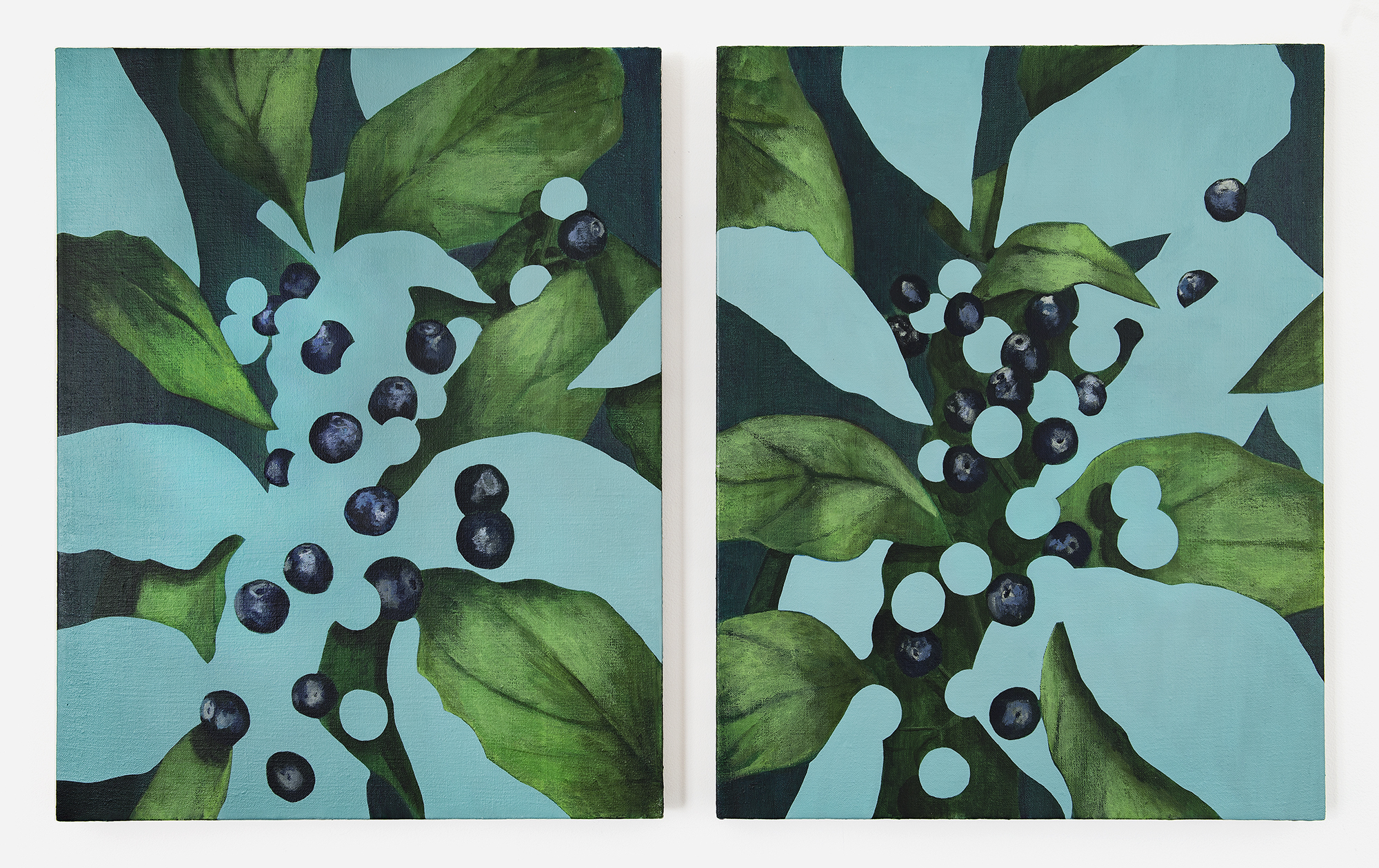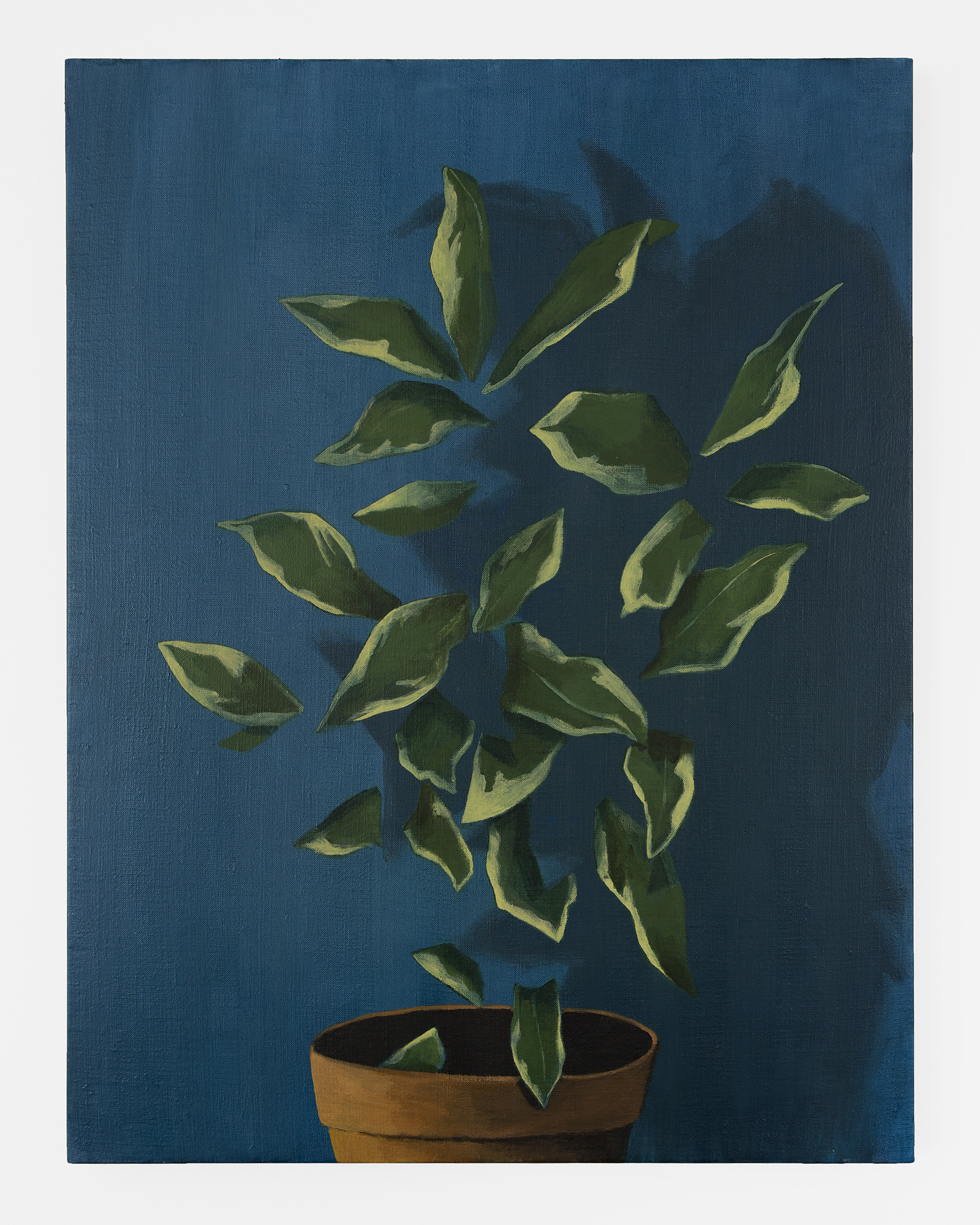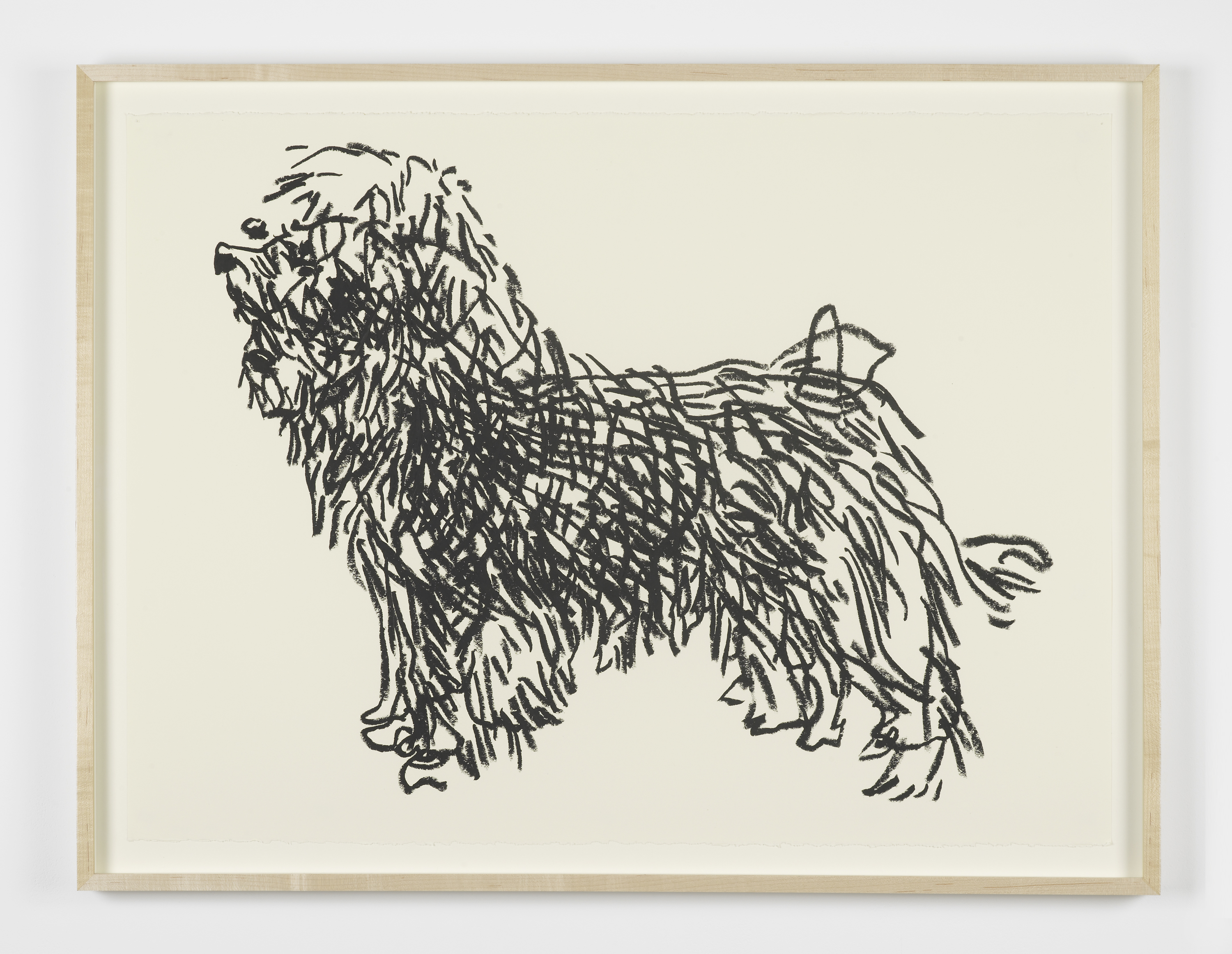New York-based Ryan Mrozowski has had a busy few years, with group shows at Marianne Boesky and Salon 94 and his first solo exhibition at On Stellar Rays. His painting ‘Untitled (Oranges)’—depicting a mysterious, dark orange grove where the fruits grow in suspiciously perfect rows—was a highlight at the city’s Armory Show in March this year. And in early October, days before this year’s frieze, the artist opened his first UK solo exhibition at Arcade in London.
Mrozowski’s paintings explore optics, repetition and the depiction of nature, and they’re satisfying to unpick. One work, ‘Shifted Flowers’, portrays a patch of large daisies—the image dislocated uncomfortably so that everything on the canvas seems doubled. It’s trippy, sure, and as we stood in front of the painting I was fairly certain that we’d at some point begin to talk about hallucinogens—but Mrozowski explained to me that actually, without his glasses, this is pretty much just how he sees the world.
This sense of playfulness, and also of surprise, is very palpable in the room—and it means that to get a sense of the way in which Mrozowski is examining perception, it’s important to view the works together. Where one half of his acrylic-on-linen diptychs will use an unnatural block colour in place of the plant’s leaves, its pair shows us only those leaves, hanging mysteriously in the air like the Cheshire Cat’s grin. Elsewhere a scribbled image of a dog turns out to be three scribbled images of three dogs, all sitting tightly on top of one another. Each work is like a word, Mrozowski says, and together they make up the sentence—the ‘poetic logic’—of the exhibition.
Your work looks closely at the natural world—particularly at fruits and plants. What is it about these subjects that intrigue you?
I’m not sure exactly how this crept into my work, but over the past several years I’ve often used natural and botanical motifs as a starting point for the perceptual play in my paintings. I grew up in a very rural part of Pennsylvania and spent much of my childhood outdoors. Having lived in New York City now for the past decade-plus, I’m sure that there is something about the urban-nature dichotomy that hums in the background of my thinking. In general I find natural symbolism to be a poignant counterpoint to the types of image interventions I make as a painter.
Despite this engagement with nature, there’s a strong sense that what we’re looking at in the painting is artificial in some way, and that can feel a little sinister. What are you playing with here?
In many ways my engagement with (natural) imagery is an effort to complicate the legibility or coherence of the source image, whether by separating it into constituent parts or shifting parts of it off-register. My intentions are more mischievous than sinister, although I think that the thwarting of expectations (by removing part of a picture for example) can be unsettling or even frustrating to the eye. Creating this friction is at the core of my practice. We have deeply engrained expectations of how nature behaves, as well as an expectation of how nature fits and behaves within the tradition of landscape and still life painting.
How do you use repetition in your work?
Repetition is at the heart of making art for me, a literal re-presenting of an image in many cases, the copying of what I see in the world around me. I’m filtering the language of digital tools (cutting-and-pasting, cropping, layering, tiling, etc) through the handmade analog process of painting in some ways. When making multiples of something by hand, the subtle differences pile up to become distortions, and highlighting these differences between renditions has become part of the content in my work. It’s like a game of telephone where the message is garbled and morphed through the various deliveries. I’m trying to welcome this mutability into my practice, both within individual works and as a guiding principle to find new content and further complicate what will come next.
One of the works at Arcade is a scribbled image of a dog, drawn in black lines on white paper. It’s quite different in style to the rest of the work in the room. What is its place in the exhibition, and how is it connected to the themes you’re working with?
This drawing actually depicts three separate dogs stacked on top of one another. By piling up the marks, the boundaries and components of each individual dog give way to a sort of messy, vague, meta-dog. I like it as a change of pace within the gallery. In the way handwriting can be barely readable, I’ve made these crude oilstick drawings that play with the notion of legibility in image-form. The drawing connects directly to themes within the exhibition in this way, though it would please me to leave viewers scratching their head a bit as they experience the show.
You said you brought way too many works over to the UK with you, and had to choose which ones to display in the gallery at the last minute. How do you decide which to hang together?
My painting practice is pretty discursive and wandering – I tend to work with a wide variety of images in my studio simultaneously. I hold close the notion that the works all function as individual ‘words’ that can be combined and rearranged to create different ‘sentences’ in the context of an exhibition. Making shows for me is all about stringing together the right words in the gallery space. Hopefully each show begins to reveal its own poetic logic and language.
A short extract from George Perec’s 1967 novel ‘A Man Asleep’ acts as the show’s description on Arcade’s website. How does the extract interact with the works?
I’m a pretty avid fiction reader, and whatever I’m reading has a way of seeping into my studio. I’m an ardent Perec fan, and this summer read ‘A Man Asleep’ as I was working on this show. I loved the way the book captured a feeling of aimless, wandering thought, and this excerpt seemed to echo certain underpinnings of this show: slippery symbols, tracing the borders of shapes within a picture, confusing the relationships between forms. A good portion of any decent day in the studio for me is spent staring and letting my mind wander in the way this particular passage describes. A certain lack of focus has become one of the most trusted tools in my studio.











